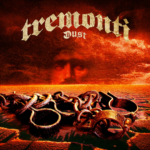ORFIUM Set To Change The Rules: An Interview with Christopher Mohoney & Drew Delis
Polaroid SNAP
The groundbreaking new social music platform Orfium launched in July, and it’s base is quickly and quietly growing as they work hard develop their unique and incredibly broad service to benefit not only listeners and labels, but to create a realistically beneficial service for ARTISTS and BANDS. With the highest payout in the industry, brilliant fingerprinting technology to protect artists, and outstanding flexibility between the services they offer, it’s only a matter of time before they start to displace the big names that are only looking out for their profits rather than artists. We got a chance to chat with Co-Founder/CEO Chris Mahoney and Co-Founder/President Drew Delis to get the background and gist of what Orfium is all about, what all that technical info MEANS, and what’s on the horizon!
Thanks so much for sitting down with us today, how has the Orfium launch been going so far?
It’s our pleasure and thank you for having us. So far the launch has been going very well. We have received a lot of positive feedback and we are just eager to continue rolling out many additional features and enhancements we have planned. Since launching between 200 and 400 new artists are joining every day however I believe we have just barely touched the tip of the iceberg as many more have yet to hear about us.
What was the purpose of creating Orfium? How were you inspired to develop an alternative service?
The purpose for creating Orfium is three-fold, first to bring justice for music creators, second to resolve copyright disputes by generating royalties to rightsholders especially in the case of remixes, and third to elegantly integrate the fragmented music industry into a consumer facing social music platform.
Formally, our mission is to provide an open, elegant, and flexible music platform that puts artists and rights holders in control of all forms of promotion, retail, licensing, and distribution of music in the digital age, and to provide fans with the best discovery, sharing, and listening experience.
The current state of the industry for music creators is as if they make a pie for everyone and everyone fights to grab a piece and then leaves the creators with only the leftover crumbs. Orfium puts the music creators in power to carve the pie and decide who gets what sized piece. As an open platform artists have the option to upload directly and sell their music directly to fans on Orfium. They can also customize all of Orfium’s services to fit their needs and accommodate any 3rd party deals they have or are pursuing. All services can be modified, added, or removed at any time with no long-term contract requirements and no up-front costs which eliminates legal and financial risk.
With regards to copyright disputes, we will handle them in a similar fashion as YouTube. I (Chris) previously was an administrator in YouTube’s Content ID system and managed over 6 million music copyrights on behalf of their rightsholders. Whenever a YouTube video contained one of our rightsholder’s audio assets, advertisements would display around the video and generate revenue to the rightsholder. Likewise on Orfium we can abstract the monetization rights from an upload and assign that to the original rightsholder. For example in the case of a remix the remixing artist could still keep the track up for free while allowing all of the money it earns to flow to the original artist which is a win-win for all.
The fragmented industry issue is that we currently have many different types of music platforms and services that perform a limited set of functions. For example SoundCloud and MixCloud are primarily used as promotional outlets while Apple Music, Spotify, and Google Play are only retail outlets for selling to consumers and then there are a number of licensing platforms. It takes a lot of time to upload music to all these different platforms. I also previously managed a sync-licensing library and we spent a lot of time sending clients back-and-forth between the YouTube Content ID service and sync-licensing and I felt like all of this should have been handled in a single upload process. It is also not optimal for an artists to promote music on one site, sell it on another, and license it on a third site. Instead it would be more efficient to be able to promote and sell music in the same place. Also it provides a better consumer experience by having free promotional music in the same place as for-sale music so that it is easy to save it all to a single playlist. Orfium combines the universes of free music and paid music along with every possible digital revenue generating service in one simple upload gateway.
We’ve heard that Orfium is a combination of SoundCloud, Spotify, and CD Baby, can you explain what that entails for artists and listeners?
For artists and listeners it entails having the best of all useful functionality in one place. It has the potential to provide listeners with a much bigger library of music since it includes both free and paid music. It also provides an elegant social sharing interface that functions like SoundCloud woven with the optimal listening and discovery interface of Spotify. On SoundCloud it is not easy to access and listen to saved music as it is on Spotify, however Spotify lacks the social profiles and sharing features of SoundCloud, while Orfium has both. For artists it means they can interact and engage with their fans as they would on SoundCloud while generating retail revenue and making every stream count, as well as benefit from other monetization options such as licensing and global digital rights management.
We’ve read about fingerprinting content in monetization, what does that mean, precisely, and how does that benefit artists? How did you develop that technology?
An audio fingerprint is like a recipe that describes the components of a particular sample of a song. The process of matching fingerprints is like taking a smoothie and unscrambling it into its elemental parts such as the bananas,
apples, oranges, etc… and checking these against a known recipe to see whether it matches. It benefits artists because it can automatically detect unauthorized derivative works of their original works and that information can be used to generate royalty payments.
The technology has actually been around for a while and we did not invent it at Orfium. In fact the same algorithm is actually used by astrophysicists to analyze light frequencies emitted by stars and planets to determine their chemical composition. Each chemical compound reflects a unique fingerprint of light and they simply unscramble the blended light into its component frequencies to determine what chemical compounds are present. I believe Shazam and YouTube are really the pioneers in applying this to music identification. Most people are probably more familiar with Shazam’s use of the algorithm for identifying songs, but YouTube uses it as well for their copyright identification system.
The basis of the mathematics behind the fingerprinting algorithm was actually discovered in the 17th century by a brilliant French mathematician named Jean-Baptiste Joseph Fourier. It’s actually pretty amazing to consider how far advanced mathematics can be ahead of it’s technological applications and the possibility for it to give us a glimpse into the future.
What sets Orfium apart from the other music streaming services?
First, Orfium is an open service which means any artist can directly upload whereas other services are closed in that the only accept content from aggregators, distributors, or labels. This means that the artist gets to collect earnings directly from retail sales rather than through a chain of middlemen.
Orfium also pays 80% of retail revenue to artists which is higher than any retail streaming service pays to artists and rightsholders.
We spent a lot of time designing Orfium so anyone in the industry, whether they’re new artists, a distributor, or a major label, can plug in and participate, and not at the expense of any other party. No other service is as complete and integrated as Orfium in terms of the social, promotional, retail, and licensing features, and I believe Orfium is the only upload gateway where artists will be able to easily utilize every possible digital music revenue generating service within a single upload gateway.
Is Orfium specialized to certain genres or is it open to any musician?
Orfium is open to any musician and uses a comprehensive system for categorizing music for anyone who wishes to explore a particular genre.
Are there any additional developments that you’re prepared to announce at this time?
We have been getting a lot of requests from users who want a group sharing feature since SoundCloud will be getting rid of their group sharing feature due to platform instability. I think it sounds cool as it would add another dimension of discovery and user curated music. We are just working out a plan of how to gracefully integrate it in the existing interface and keep the site nicely organized.









Leave a comment